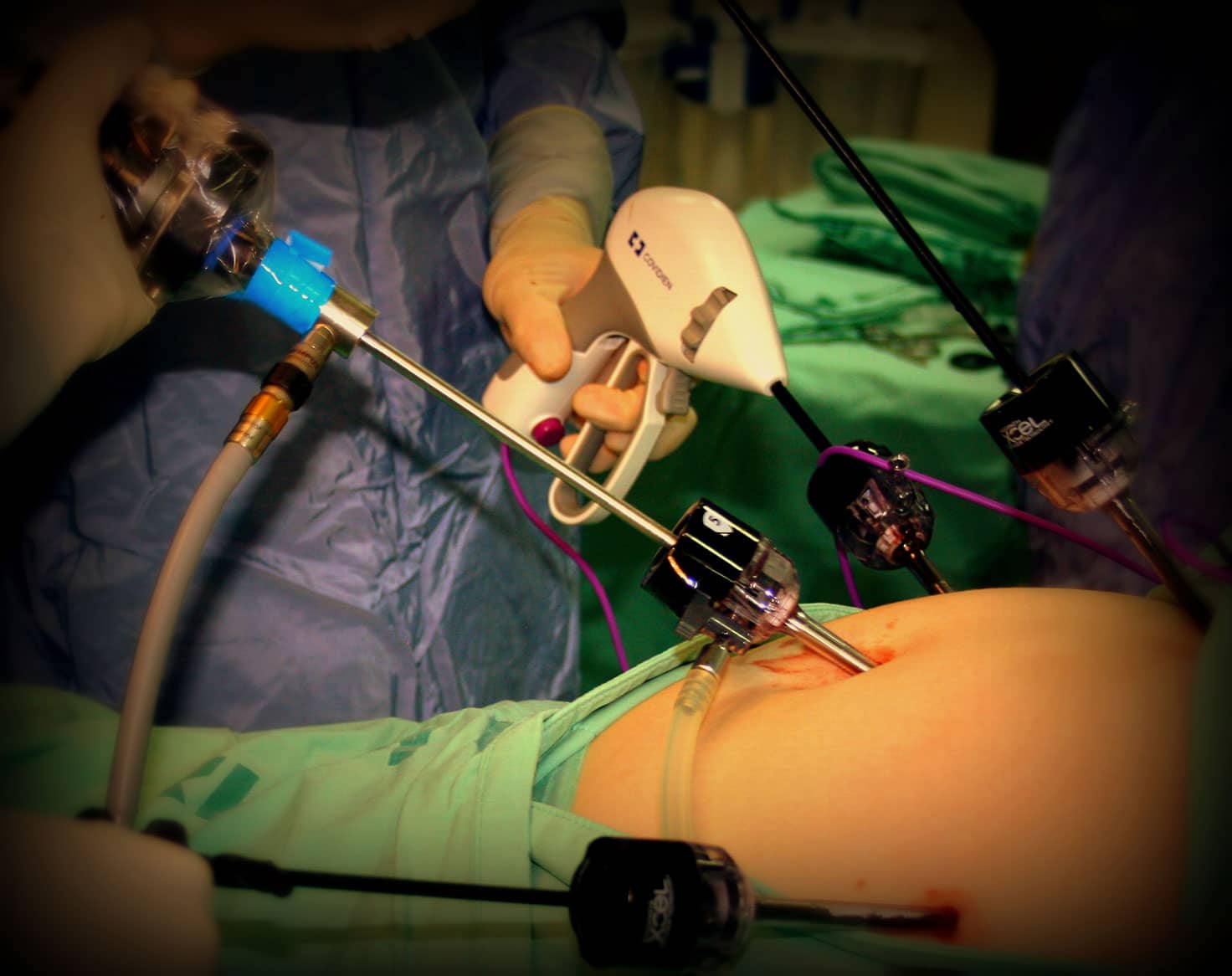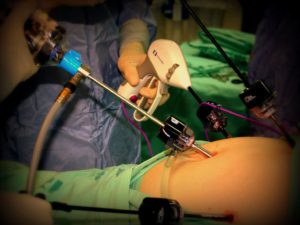
Laparoscopy is a minimally invasive surgical procedure performed using laparoscope, a thin fiber-optic instrument with camera and lens attached to it. Laparoscope can be used for diagnosing and treating various conditions.
Dr. Amir has sub specialized in laparoscopic surgery in Monash Medical Centre, and has gained extensive experience in the field, in Australia and overseas.
The idea behind the laparoscopic technique is the possibility of performing complex surgeries, identical to the once done in open abdominal surgery, but without the need to open the abdomen in a large incision, and with minimal contact with internal tissues.
Laparoscopy in gynecology is used to check for any abnormalities in the uterus, ovaries, fallopian tubes, and other organs which are not evident by other diagnostic procedures such as X-rays and other scans.

The advantages of laparoscopic surgery:
- Less pain after surgery
- Faster recovery
- Minimal scars
- Quick return to normal routine activity
- Reduced risk of infections
The operation is performed under general anesthesia. An incision is usually made in the belly button through which a gas that inflates the abdominal cavity is inserted and the laparoscope is inserted. Additional small incisions are made on the sides of the lower abdomen in order to allow the insertion of surgical instruments through them, such as grasper, scissors, a needle holder, and more.
At the end of the operation all the instruments are removed, and the small incisions are closed by disolvable suture or biological glue.
Laparoscopy is a diagnostic and therapeutic tool. Laparoscopy can be performed as part of the examination of abdominal and pelvic pain, infertility, etc., as well as for surgical treatment in cases such as:
Ovarian cysts
• Endometriosis
• Separation of adhesions
• Hysterectomy
• Myomectomy
• Confirming tubal patency
• Treatment for ectopic pregnancy
• Repair of pelvic organ prolapse
Risks and complications are possible in laparoscopic surgery; There is no surgical intervention that is completely safe and without complications. But, the laparoscopic approach is one of the ways to reduce complications. In any surgery, complications may occur, such as bleeding, infection, damage to adjacent organs, etc.
The anesthesia itself, for the surgery, involves a certain risk, which increases in the presence of obesity, smoking, and various background diseases. In laparoscopic surgery, there is also a small, albeit small, risk of having to undergo open abdominal surgery due to significant complication or technical difficulty. The risk is low and is estimated to be less than 1%.
Returning to your daily routine after the surgery depends on a number of factors: the type of surgery you have undergone, your overall health condition, the physical activity you wish to return to. In principle, the average return to routine activity is up to two weeks and is significantly shorter than after open abdominal surgery, which is about 6 weeks. Most of the patients will return to routine, including driving and housework or office work, within a few days. Return to sports activity or other strenuous activity is recommended after two weeks.
In case you have any doubt about returning to the activity, it is always best to ask me.

